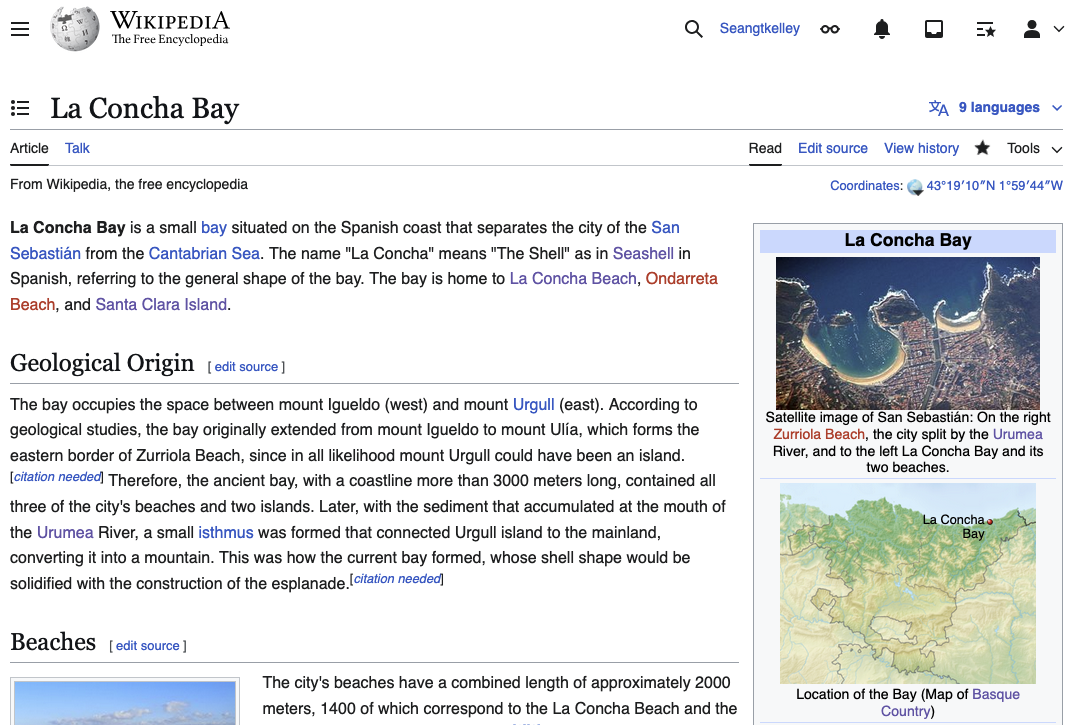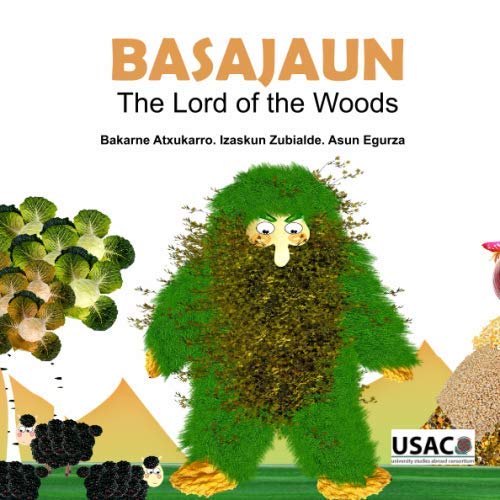Translation on Wikipedia: Bahía de La Concha from Spanish to English
Background
I have always been interested in languages, and Spanish was one that I particularly enjoyed learning. I started seriously studying Spanish in late high school and continued to obtain a B.A. in Spanish language in college. Throughout my four years, Spanish courses were always a nice reprieve from more techinical courses. In addition, the difference between a minor and major required me to study abroad in Spain where I could take a full class load of advanced courses my final semester in Spring 2020. When the pandemic hit in 2020, I was forced to return to the US and continue my Spanish classes remotely. It was quite a difficult transition and I felt robbed of my academic opportunities due to the lockdowns. I’m sure many students still feel that way about the pandemic despite the fact that the measures were necessary.
Either way, I needed an engaging activity that was both challenging and enjoyable - something that would allow me to immerse myself in Spanish while staying productive during such an uncertain time. This led me to explore different ways to practice, from reading articles to watching Spanish-language media, but I wanted something more interactive and goal-oriented.
During my semester abroad, I enrolled in a translation class. This turned out to be an incredible experience. We primarily worked on translating a Basque children’s folktale from Spanish and Euskara to English. There would be fierce debates in class about sometimes the simplest wording and it was here that I felt for the first time the insurmountable but invigorating task of faithful translation. The fact that this book was aimed at children added an additional layer of difficulty as often certain words would have different difficulty levels between languages. For example, the Spanish translation uses the word trillar, which means to thresh as in wheat, but no beginner reader in English would be familar with threshing wheat! However, we also had to consider if we wanted to include some more difficult words as a learning experience.
As is probably evident, I thoroughly enjoyed the course. Thus, after the semester ended, translation seemed like a great way to continue to exercise my Spanish skills with the potential added benefit of making texts or information more accessible to more people.
Wikipedia Translation Tool and My First Attempt at Translating an Article
While searching for ways to practice translation, I discovered the Wikipedia translation tool. It seemed like the perfect way to continue working with Spanish while contributing to a valuable knowledge resource.

Big articles about topics that I didn’t know much about would be difficult to translate, but I began to realize that many articles about places, cities, or lesser know authors did not yet have English articles.
The first article I decided to translate was Bahía de La Concha. Bahía de La Concha is the beautiful bay which is home to two of the three picturesque beaches of San Sebastian in Basque Country, northwestern Spain. Before COVID upended my final year of undergraduate, it was the city in which I studied and took the translation class. What a fantastic coincidence!
I quickly got to translating via the tool. It lets you go section by section through the article and save your changes. They also used to offer built-in machine translation, but it seems that was too easily abused so it was disabled for all users.

If you’re not already a seasoned wikipedia editor, you’ll probably also see a scary warning message that you cannot publish in English wikipedia, but that’s okay. You can publish your translation as a draft first, then bring it to the main space, and someone will review it. If I had known this in advance, I probably wouldn’t have gotten so stuck.

In short, I had saved my work as a draft and reached out via the Teahouse where you can ask pretty much any question about using and editing. Everyone in the community seems quite eager to help, and some users quickly pointed out that 1. I would need to add more references and 2. ensure my article was about a sufficiently “notable” topic to meet the requirements English wikipedia. The second part thankfully was already taken care of as “legally recognized, populated places are presumed to be notable”.
Despite this, I never got around to finding proper sources for my English article, and it would remain as a draft for about three more years.
Back from the Archives
Those three years were a bit of a blur, but when I left work to persue a Master’s degree, it reenergized me. I also started taking Spanish classes and found myself thinking about this unfinished project. With renewed motivation, I decided to pick up where I left off and finally complete the translation.
Since my draft had been inactive for a long time, Wikipedia had archived it. I thought it might be lost forever, but it turns out the process for unarchiving a draft was as simple as leaving a message on a certain board and within hours someone had restored it.
The references still proved to be a challenge. In one section, the Spanish article completely lacked any citations and I had to remove it in its entirety. However, most of my translation I was able to keep.
I also took this opportunity to add some features to the article like a Body of Water Infobox and stub message to the bottom.
Finally, it came time to publish the article. I really didnt know how to do that at all. I figured it would be a complicated process with perhaps a review process. To my surpise, I only needed to move the draft to the “Main Space”. The only other extra step was to connect my article to the other language versions. It would turn out that the article did need to be reviewed, but an experienced editor made quick work of it a few weeks after I published.
Conclusion
Any there you have it! This project was both a challenge and a rewarding learning experience. Not only did it help me improve my Spanish and translation skills, but it also allowed me to learn how the Wikipedia translation and editing process works. I hope this small tale might give someone else the confidence to help translate on Wikipedia. It’s not as scary as it might seem and open access to information will always be important, but especially in these uncertain times.

